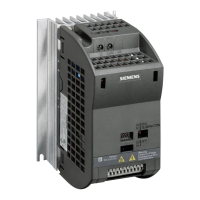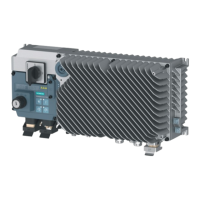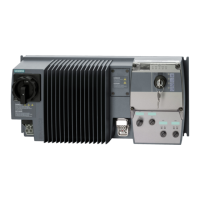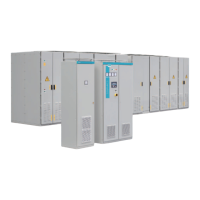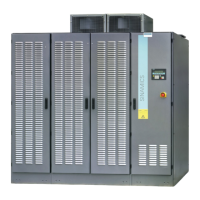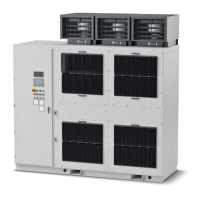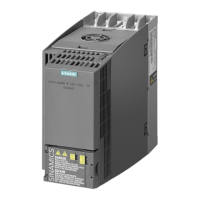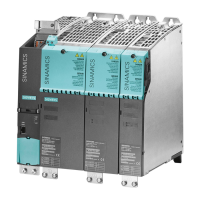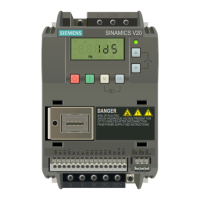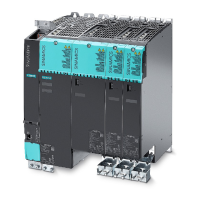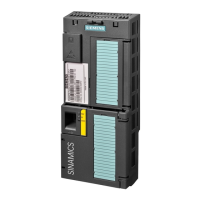
Do you have a question about the Siemens SINAMICS G120 CU240B-2 and is the answer not in the manual?
| Product type designation | SINAMICS G120 CU240B-2 |
|---|---|
| Digital inputs | 6 |
| Analog inputs | 2 |
| Rated current | According to connected Power Module |
| Output current | According to connected Power Module |
| Control Method | Vector control, V/f control |
| Communication Interfaces | USS, Modbus RTU |
| Protection Class | IP20 |
| Operating temperature range | -10 to +50 °C |
| Storage temperature range | -40 to +70 °C |
| Relative humidity | 95% non-condensing |
Details the manual's purpose and intended audience.
Provides an overview of the manual's structure and content.
Lists available manuals and software for SINAMICS G120 applications.
Explains how to commission the inverter to match specific drive tasks and motor characteristics.
Lists essential parameters for common inverter setup and configuration tasks.
Explores advanced adaptation capabilities beyond basic commissioning using BICO technology.
Explains the modular design of SINAMICS G120 inverters for versatile applications.
Details the different Control Unit types and their features, including safety and fieldbus options.
Describes Power Module types, frame sizes, and degrees of protection available.
Lists permitted combinations of line-side and load-side components like reactors and filters.
Provides a step-by-step guide for installing the frequency inverter, including prerequisites.
Covers the installation of Power Modules, including mounting options and dimensions.
Guides the installation of the Control Unit onto the Power Module and describes its interfaces.
Outlines common scenarios and provides a commissioning procedure flowchart.
Covers prerequisites and initial checks before starting the commissioning process.
Details how to use factory settings for basic applications and lists essential parameters.
Explains how to use the Basic Operator Panel-2 for inverter commissioning and parameter adjustment.
Guides the process of commissioning the inverter using the STARTER PC tool.
Covers methods for backing up and transferring inverter settings using memory cards or PC tools.
Details the process of resetting inverter parameters back to their factory default settings.
Describes the pre-assigned functions of digital inputs and how to configure them.
Explains the setup for fail-safe digital inputs, essential for safety functions like STO.
Details the available digital outputs and how to change their assignment to various signals.
Covers the configuration of analog inputs for voltage or current signals and their scaling.
Explains how to use analog outputs to display signals like actual speed or voltage.
Explains how analog signals are scaled for fieldbus data exchange.
Details the process for configuring and establishing communication via PROFIBUS.
Describes communication protocols over RS485, including USS and Modbus RTU.
Provides a comprehensive overview of the inverter's various operational functions.
Explains how the inverter controls motor start, stop, and direction using digital inputs.
Defines where the inverter receives its control commands from, such as digital inputs or fieldbus.
Describes how the inverter receives its setpoint, including analog inputs, fieldbus, and potentiometers.
Explains how setpoints are modified by limits and the ramp-function generator.
Compares V/f control and vector control techniques for induction motors.
Covers inverter and motor protection features against overtemperature, overcurrent, and overvoltage.
Introduces advanced functions like braking, automatic restart, PID control, and logic blocks.
Describes the commissioning and implementation of the STO safety function via fail-safe digital inputs.
Covers how to switch between different parameter sets (Command Data Sets) for various operating modes.
Provides guidance on replacing Power Modules and Control Units without needing full recommissioning.
Details the procedure for replacing a Control Unit, with and without a memory card backup.
Outlines the steps for replacing a Power Module and the subsequent acceptance test for safety functions.
Explains the meaning of the inverter's status indications via RDY, BF, and SAFE LEDs.
Describes alarm properties, the alarm buffer, and how alarms are signaled and saved.
Provides a list of common warnings, their causes, and recommended remedies.
Details how faults are signaled, the fault buffer, and fault acknowledgement procedures.
Lists common faults, their causes, and remedies for troubleshooting inverter issues.
Presents detailed technical specifications for the CU240B-2 Control Unit.
Provides detailed technical specifications for the CU240E-2 Control Unit.
Covers technical data for Power Modules, including overload capabilities and general specifications.

